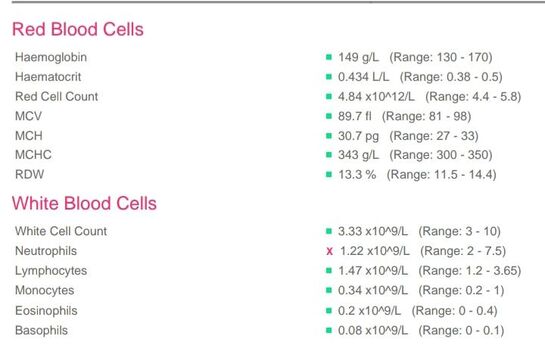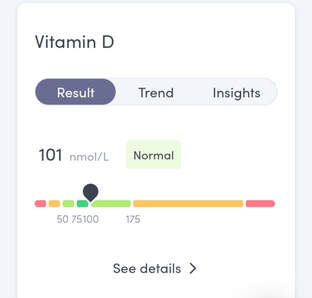|
I recently sat down with Olympian and National Record holder, Zane Robertson, for a live interview over video call. Zane shared some insights into his own training, typical training of Kenyan athletes, psychology behind hard training sessions and races, food on race days and much, much more!
Rewind the clock back to 2006, which is when Zane and his twin brother Jake, packed a suitcase in their homeland of New Zealand and headed for Kenya. They only had one thing on their mind, to become two of the best athletes in the world. The initial years were tough, very tough. Living in a mud house, sharing a single mattress and surviving malaria are just some of the challenges they faced. After years of hard work, progress was really starting to show and they started to make their mark on the running world. Appearances at the Commonwealth games, Olympics and World Championships, as well as many high profile road races, have shown the world that they are ready to compete with the very best and the dream is becoming a reality. I have known Zane for 6 years now, and each conversation we have, we learn from one another along the journey. Here are some of the learnings from this interview.
0 Comments
Did you know that your brain is approximately 60% fat? So if you have ever been called “Fathead”, it’s actually not too far from the truth. However if your total body fat is 60% then we have ourselves a problem. I have read a lot recently about how the brain controls the body and some of these studies got me thinking.
Phantom Limb Pain (PLP) for instance has been studied for over 50 years and we are still struggling to pinpoint the mechanisms behind it. PLP is basically pain, a real pain, which exists in a limb that is no longer there for whatever reason, typically amputation. So we know that the pain can’t be originating in the limb. It must be the nervous system (brain, spinal chord and nerves). Similarly, there are studies whereby an individual puts their hand in a box, and then sees a video of their hand apparently being pin pricked when it is not actually their hand. The individuals report the pain simply because they think they are being pin pricked! Pretty cool huh?! If the body has this relationship with pain, then could it be the same with other things such as hunger and appetite? To tell you about this next study, I need to give you a bit of background about the science, but I’ll try to keep it short and not bore you. Appetite and body fat storage are driven by a selection of hormones such as testosterone, cortisol, insulin, leptin, ghrelin and others. Ghrelin for instance is produced in the gut when no food has been there for a while. It sends a signal to the brain telling it about a lack of food and this in turn makes you hungry. So, more ghrelin equals more hunger and a bigger appetite. As you would expect, when you do eat food, ghrelin is suppressed and hunger goes away. So this particular study, measured ghrelin levels in two groups of participants after giving them each a type of food. Group 1 were given a boring low fat, low sugar milkshake of only 104 calories. They were shown a picture with the stats and told about how boring it was. The other group were given a super duper high sugar, high fat milkshake obviously bursting with taste, flavour and a whopping 600+ calories. Again they were shown the stats and told about how disgustingly bad for their waistline it would be. Ghrelin levels were measured in both groups before and after consuming the milkshake. The group having the boring slimline milkshake only showed a very small drop in ghrelin levels whereas the second group with the super bad for you milkshake showed a much larger substantial drop in ghrelin levels, reducing any hunger pangs. Or so the participants thought. In actual fact both groups were given the same 300 calorie milkshake. Amazing huh? The ghrelin levels, either reducing appetite, or not, were completely driven by the nutrition information that they participants were given. So could it be that the brain is also controlling hunger and appetite instead of any physiological processes within the body? If you have been on a diet recently, you probably noticed that you were hungry. This raises the question, were you hungry because you had cut down the quantity of food consumption or was it because you know you were on a diet and the brain was controlling your hunger? So next time you feel hungry, ask yourself if you really are.  Example of some blood results Example of some blood results What can your blood results tell you as a runner? With home test kits widely available these days, your “blood numbers” are now more accessible than ever. Or perhaps you have recently been to see your family GP who has done some standard blood tests on you. Maybe you are feeling a bit run down and not reaching your peak performance even though your training has been solid. A blood test can be a lot more interesting and tell you a magnitude of information that your GP might not feel obliged to pass on to you at the time. Full Blood count (FBC) A full blood count contains many interesting numbers for consideration. For example, the main job of Haemoglobin (Hb) is to carry Oxygen (O2) around the body, from the point of breathing in, to delivery of Oxygen to the muscles for energy. As you increase the intensity of exercise, ie by running faster, you breathe heavier as your body demands more Oxygen and expels Carbon dioxide. Hb sits within a red blood cell (RBC) and contains an iron (Fe) molecule which helps it to keep its shape. Therefor there are three things mentioned here that are essential for this process to take place: 1. Haemoglobin (Hb), 2. Red Blood Cell (RBC), 3.Iron (Fe). As a runner, you certainly don't want any to be low. A good iron intake is required for Hb production, which typically comes from red meat, fish and chicken although green leafy vegetables such as spinach and kale can be among some of the best sources. Vitamin C is also required for iron absorption so kiwi fruits, oranges and strawberries could make the perfect fruit salad desert to your chicken and spinach curry. Vitamin B6 and B12 are required for red blood cell production. B12 is largely found in animal products so vegetarians need to be aware of their levels and B6 is also abundant in many fruits and vegetables as well as cereals. You can have your iron levels measured easily in your blood as well as Total Iron Bonding Capacity (TIBC) and ferritin. An iron deficiency would typically result in low iron/ferritin levels coupled with high TIBC. Steady state aerobic type exercise such as going for a long run, could help to increase your RBC count. However the life span of a red blood cell is relatively short and during high intensity exercise they can die off at a faster rate, lowering your RBC. This process produces Bilirubin as a waste product which is also typically tested in a standard blood test. So a low RBC with a high Bilirubin level can be a typical sign of over training. Note: A high RBC count could also be a sign of dehydration. White blood cells (WBC), otherwise known as Leukocytes, basically make up your immune system. A higher WBC can be a sign of your immune system working hard to fight off some kind of infection. A lower WBC can be a sign of fatigue and sometimes found after a marathon, a hard run or a hard block of training. It’s a sign to take some rest. Urea and Electrolytes (U&E) U&E’s are a common set of blood tests usually used to asses kidney function. However if you recognise the word Electrolyte, it’s probably because you spend a small fortune buying tablets or powder to add to your sports drink. Electrolytes are critical for the function of some bodily processes including muscle function. From recent research, sodium in particular has proved to be important in endurance athletes. This is especially important in warm weather conditions. Yes, that’s sodium as in what you find in salt. Although flavoured tablets may taste better, my alternative recommendation is a good quality pink salt or sea salt which can also hold other beneficial qualities such as a reasonable level of iron, which could be a bonus. Cheap table salt is chemically manufactured in a lab and should be avoided. Note - be wary of increasing your salt intake if you have high blood pressure or are prone to water retention. Testosterone. Typically known as “the male hormone,” testosterone is important for muscle strength and general health and wellbeing. It can be increased with effective exercise, weight training in particular and a healthy diet rich in Zinc, Vitamin D and healthy fats from egg yolks, avocado and lean meat. Getting enough rest and sleep may also be helpful. Calcium We all know that we need calcium for bone health. It is a concern in elderly populations as osteoporosis risk increases, however regular exercise, especially weight bearing exercise helps to keep the bones strong. Poor bone health for runners can increase your risk of bone related injuries such as a stress fracture, which could keep you side-lined for long period of time. Calcium is not only plentiful in dairy products but also many vegetables. In many cases, calcium is not the problem. Vitamin D is required for absorption and we are a nation largely deficient in Vitamin D. Vitamin D comes from sunshine so try to get some daylight exposure every day and increase your oily fish, liver, cheese and egg yolks. There are also links to a low vitamin D level with increased risk of some major diseases such as heart disease and some cancers. Lipid (cholesterol) profile and fasting glucose (sugar) Fasting glucose levels are typically towards the lower end of normal in runners. This is because the demand for energy from the muscle is constantly pulling the glucose out of the blood stream and into the muscle cells. However if it becomes too low it’s simply a sign that you need to eat more in general and up your carbohydrate intake. A high glucose level can be a sign of diabetes and has to be dealt with by your GP. You have all heard of your cholesterol level and a poor cholesterol breakdown increases your risk of heart disease and stroke. Exercise helps to increase HDL (good cholesterol) and decrease LDL (bad cholesterol) and hence reduces your risk. A high level of triglycerides (fat and sugar bound together) also increases your risk of heart disease. However, triglycerides provide an excellent energy source to the body so endurance athletes tend to have a low level, as it becomes utilised during exercise. So my recommendations, if you feel the need to have a blood test for performance reasons are:
Any other vitamins, minerals or hormones could be included as a bonus. Disclaimer: if you have abnormal blood results you should always see your GP. It could be a sign of an underlying health condition. You should always have your blood results analysed by a trained professional. |


